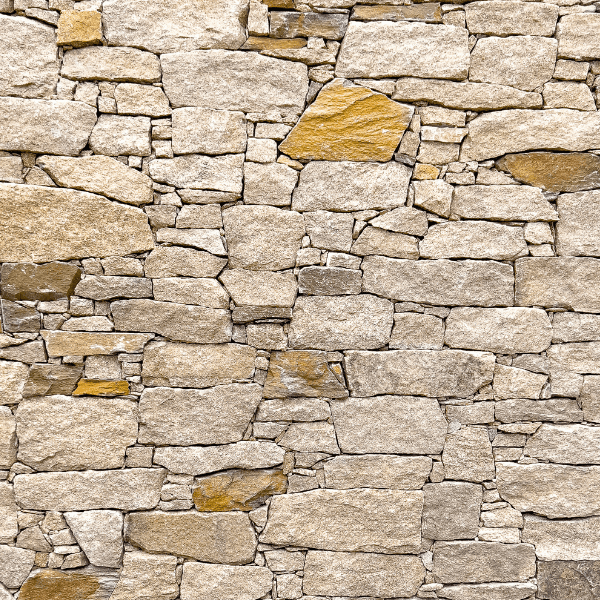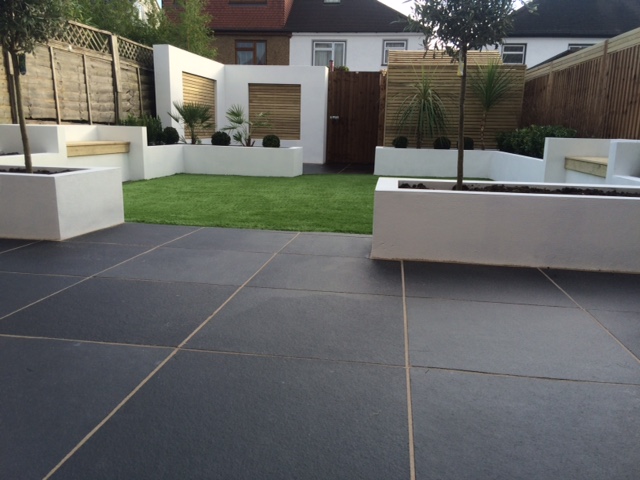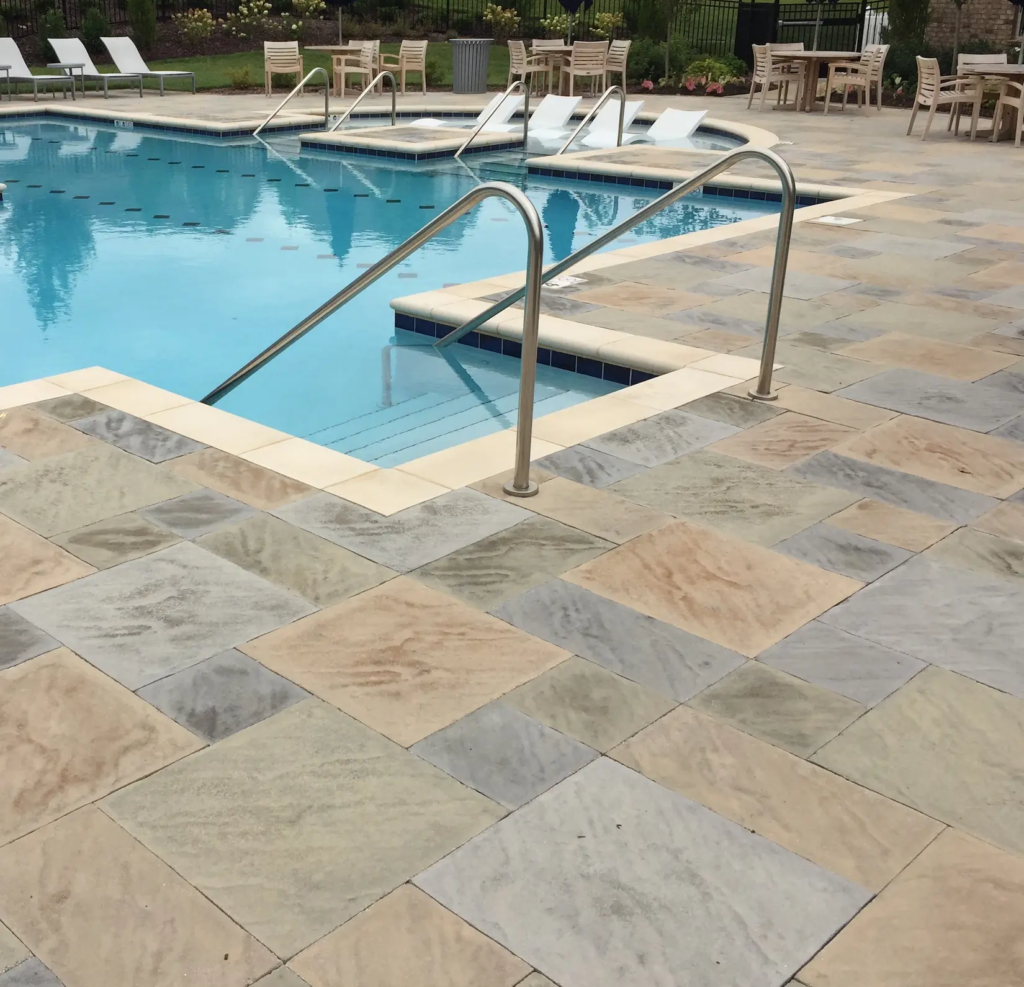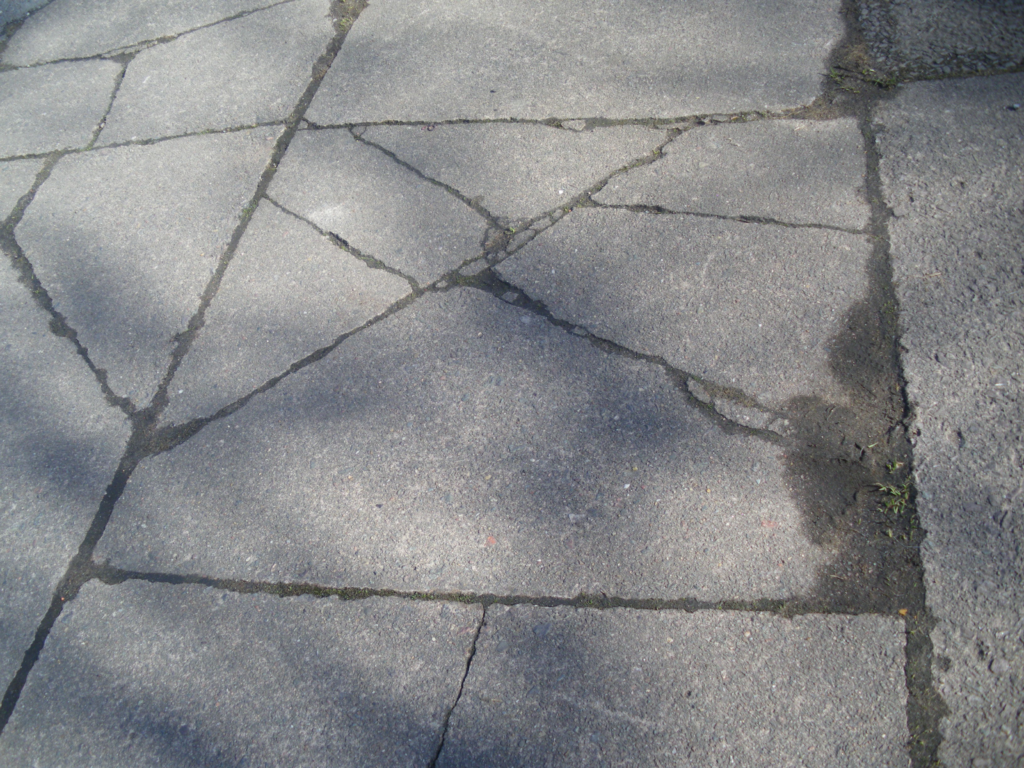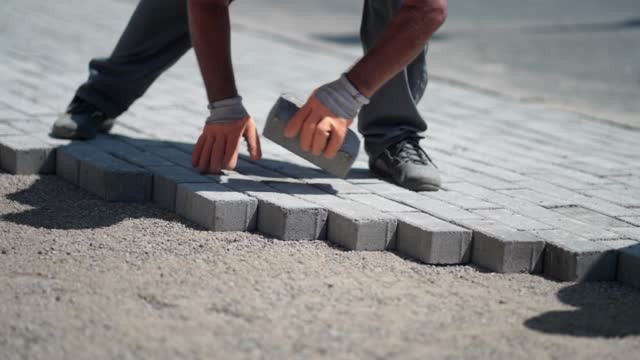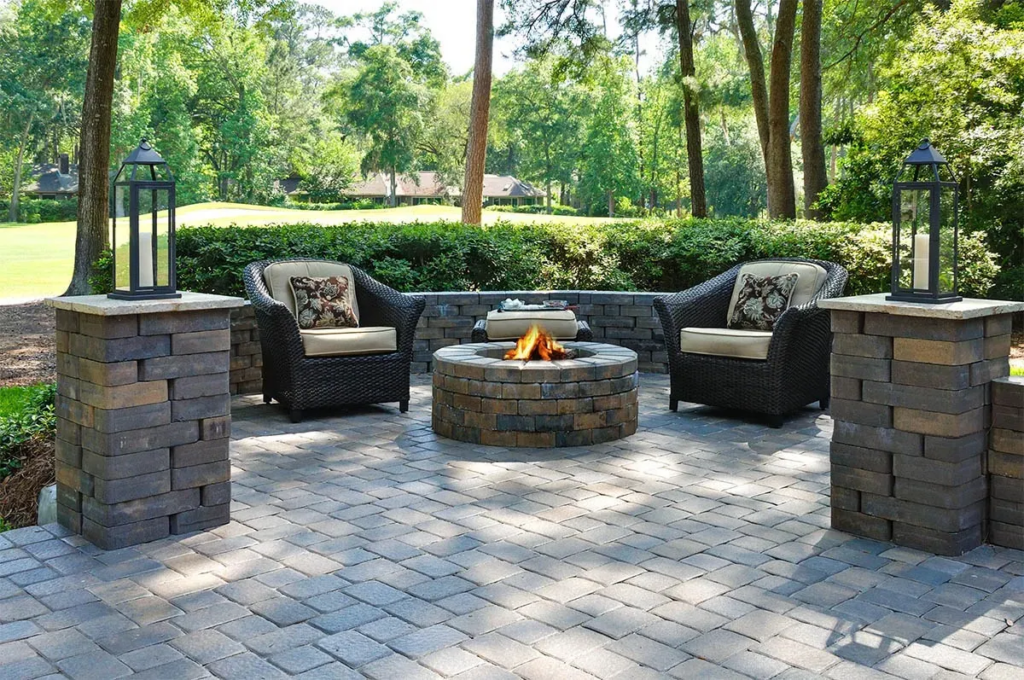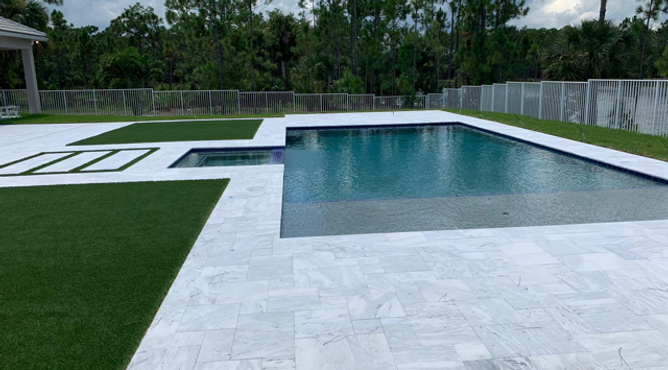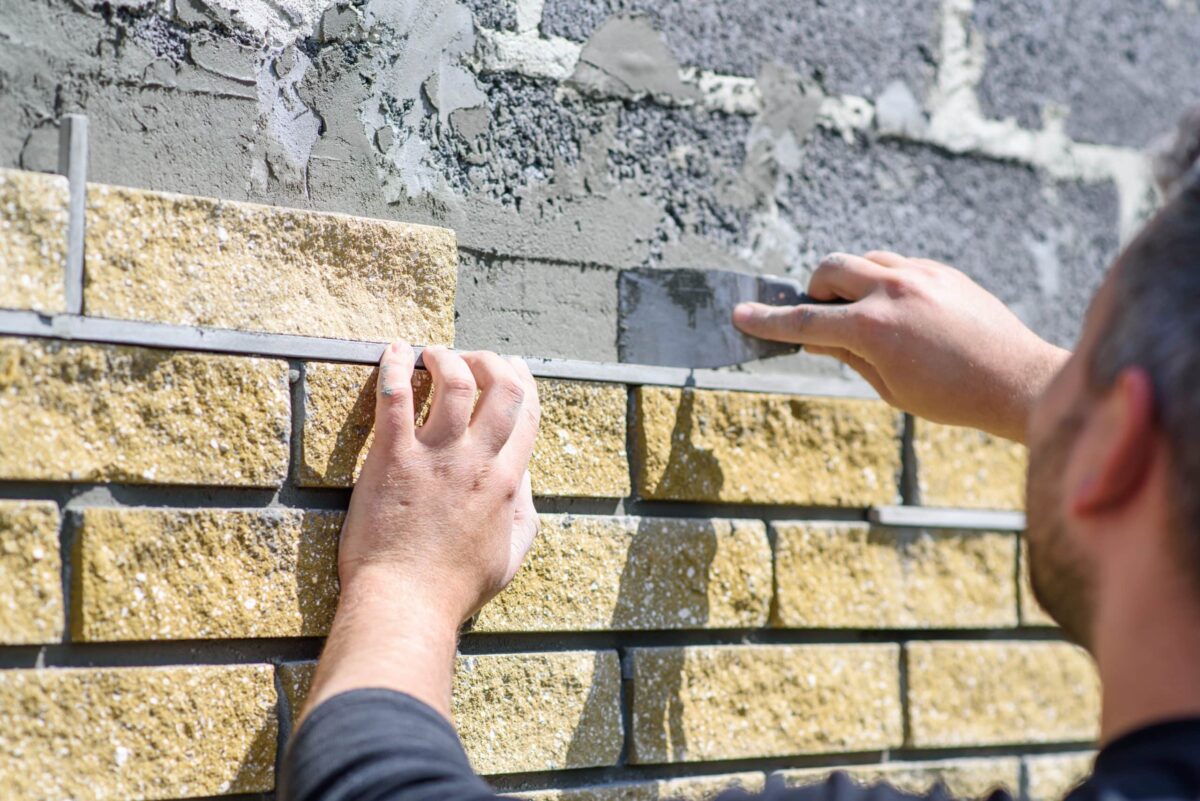What is Sandstone?
Understanding sandstone’s true value and versatility can be challenging, especially with the abundance of building materials available today.
Many overlook this natural stone, missing its unique aesthetic appeal, durability, and historical significance.
By exploring sandstone’s formation, types, and uses, we can appreciate its timeless beauty and practical benefits, making it a prime choice for traditional and modern construction.
What is Sandstone?
Sandstone is a sedimentary rock composed mainly of sand-sized mineral particles or rock fragments. It forms through the compaction and cementation of sand over millions of years. Known for its durability and aesthetic appeal, sandstone is widely used in construction, architecture, and landscaping. It is valued for its natural beauty and strength.
Formation of Sandstone
Sandstone formation is a captivating process that spans millions of years, involving intricate geological phenomena. It begins with the accumulation of sand, typically in riverbeds, beaches, or deserts. These sand particles, primarily composed of quartz, feldspar, and other minerals, are transported by wind, water, or ice, eventually settling in layers.
Over time, these layers are buried under additional sediments, creating immense pressure. This pressure compacts the sand particles, reducing the spaces between them. Simultaneously, natural cementing agents like silica, calcium carbonate, and iron oxide precipitate from groundwater, binding the grains together in a process known as lithification.
The result is a rock that varies in colour, texture, and composition, depending on the original sand and the minerals involved in the cementation process. Factors like the environment of deposition and the presence of organic material also influence sandstone’s final characteristics.
Types of Sandstone
Sandstone, with its diverse types, showcases nature’s remarkable variety. Each type of sandstone is characterised by its unique composition, grain size, and colour, making it suitable for various applications.
1. Charlotte

Charlotte Sandstone is a stalwart example of durability and aesthetic appeal in building materials. Quarried from the rich geological formations of [specific region], this sandstone variant is celebrated for its robust composition and striking colour variations, ranging from warm ochres to subtle greys. Its unique sedimentary layers, formed over millions of years, lend a distinctive texture that enhances exterior facades and interior features.
Renowned for its weather-resistant properties, Charlotte Sandstone has been a preferred choice for centuries in architectural marvels. Its resilience against erosion and its ability to retain its natural beauty under varying climatic conditions make it ideal for outdoor applications such as paving, wall cladding, and landscaping.
Architects and designers favour Charlotte Sandstone’s aesthetic versatility and workability, allowing intricate detailing and precise craftsmanship. Whether adorning a modern urban structure or preserving the historic charm of a heritage site, Charlotte Sandstone continues to embody timeless elegance and enduring quality, making it a quintessential choice for discerning builders and homeowners alike.
2. Roman

Roman Sandstone, hailing from the ancient quarries, carries a rich legacy of strength and timeless beauty. Its origins trace back to the Roman era, where it was extensively used in iconic structures such as the Colosseum and Pantheon, showcasing its enduring durability and architectural significance.
Characterised by its fine-grained texture and warm, earthy tones, Roman Sandstone exudes a classic elegance that complements traditional and contemporary designs. Its natural variation in colour, from soft creams to deep browns, adds depth and character to facades, pavements, and interior accents.
Highly prized for its weather-resistant properties and ability to withstand the test of time, Roman Sandstone remains a preferred choice for prestigious projects worldwide. Its ease of carving and shaping allows for intricate detailing, making it ideal for intricate sculptures and ornamental features.
3. Stirling

Stirling Sandstone emerges from rugged quarries and is renowned for its timeless allure and robust composition. Characterised by its distinctively fine-grained texture and warm, earthy hues, Stirling Sandstone adds a touch of sophistication to architectural landscapes worldwide.
With origins steeped in geological history, this sandstone variant boasts exceptional durability and weather resistance, making it a preferred choice for both exterior cladding and interior applications. Its natural colour spectrum, ranging from soft creams to rich browns, offers versatility in design, seamlessly blending with various architectural styles.
Architects and builders favour Stirling Sandstone for its ease of workability, allowing for intricate detailing and bespoke craftsmanship. Whether adorning grand facades or enhancing interior spaces, its ability to maintain aesthetic integrity over time makes it a staple in prestigious projects.
4. Australiana

Australiana Sandstone epitomises the rugged elegance found in Australia’s diverse landscapes. Quarried from the ancient formations scattered across the continent, this sandstone variety captures the essence of Australia’s natural heritage with its earthy tones and distinctive textures.
Renowned for its durability and versatility, Australiana Sandstone showcases a palette ranging from warm ochres to cool blues, reflecting the unique geological history of its origins. Its weather-resistant properties make it a preferred choice for outdoor applications such as paving, wall cladding, and landscaping in residential and commercial settings.
Architects and designers appreciate Australiana Sandstone’s ability to blend seamlessly into Australian architectural styles, from rustic rural homes to contemporary urban structures. Its ease of carving allows for intricate designs and bespoke detailing, enhancing its appeal in bespoke projects.
5. Kimberley
Kimberley Sandstone, sourced from the rugged Kimberley region of Western Australia, stands as a testament to the region’s geological richness and natural beauty. This sandstone variety is revered for its striking colour variations, ranging from deep reds and oranges to creamy yellows and whites, reflecting the vibrant landscapes of its origin.
Known for its durability and weather-resistant properties, Kimberley Sandstone is a popular choice for residential and commercial projects across Australia. Its fine-grained texture and unique sedimentary layers allow for intricate detailing and precise craftsmanship, making it ideal for facades, feature walls, and landscape elements.
Architects and landscapers value Kimberley Sandstone for its ability to blend seamlessly into the natural surroundings, enhancing outdoor spaces with a timeless aesthetic. Its versatility extends to interior applications, adding warmth and character to living spaces and commercial interiors.
5. Roman Ashlar
Roman Ashlar Sandstone embodies the meticulous craftsmanship of ancient Roman builders, renowned for their mastery of stonecutting and architectural precision. Originating from quarries across the Roman Empire, this sandstone variant is distinguished by its finely dressed, square-cut blocks, meticulously fitted together to create seamless, elegant facades.
Characterised by its smooth, flat faces and crisp edges, Roman Ashlar Sandstone exudes classical elegance and structural integrity. It was prominently used in iconic Roman structures such as temples, amphitheatres, and aqueducts, reflecting its enduring durability and aesthetic appeal.
Today, Roman Ashlar Sandstone remains a preferred choice for architects seeking to evoke a sense of historical grandeur in contemporary designs. Its uniformity and ability to withstand weathering make it ideal for exterior cladding and interior accentuation in prestigious projects worldwide.
Characteristics of Sandstone
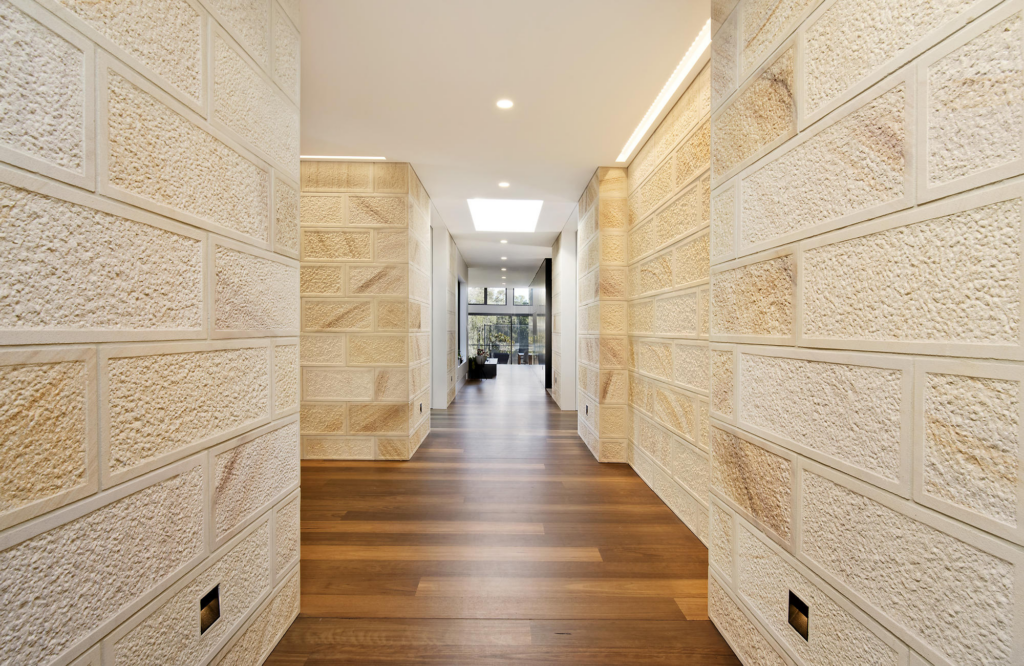
Sandstone’s unique characteristics make it a prized material in historical and modern construction. Understanding these properties is essential to appreciating their widespread use and enduring appeal.
1. Physical Properties
Sandstone primarily comprises sand-sized mineral particles, predominantly quartz, bound together by natural cementing agents like silica, calcium carbonate, or iron oxide. Its grain size ranges from very fine to coarse, impacting its texture and permeability. Sandstone is generally porous, allowing it to absorb water, which can influence its weathering and erosion resistance.
2. Aesthetic Qualities
One of the sandstone’s most appealing aspects is its wide range of colours and patterns, resulting from the varying minerals and organic materials present during its formation. Colours can range from light beige and yellow to vibrant reds and browns, often featuring striking banding and layering that enhance visual appeal.
3. Durability
Sandstone’s durability is another key characteristic. Its hardness and resistance to weathering make it suitable for various construction applications. The type and amount of cementing material can affect its strength and longevity. Properly maintained, sandstone structures can last centuries, resisting natural elements’ wear and tear.
5. Versatility
The combination of physical robustness and aesthetic diversity makes sandstone a versatile building material. It can be used for structural purposes, decorative elements, and landscaping, adapting to various architectural styles and functions.
Uses of Sandstone

Sandstone’s versatility and aesthetic appeal have made it a preferred material across various applications, from ancient structures to contemporary designs.
1. Historical Uses
Sandstone has been used for millennia to construct significant historical monuments and buildings. Ancient civilisations, such as the Egyptians, Greeks, and Romans, utilised sandstone for temples, statues, and intricate carvings. The durability and ease of carving made it ideal for preserving detailed artwork and inscriptions that have stood the test of time. Notable examples include the iconic Petra in Jordan and the Colosseum in Rome, which showcase sandstone’s enduring beauty and strength.
2. Modern Applications
In contemporary architecture, sandstone is popular for structural and decorative purposes. Its natural beauty and various colours and textures make it suitable for exterior facades, interior walls, flooring, and paving. Sandstone’s thermal properties also contribute to energy-efficient building designs, providing natural insulation. Additionally, heritage restorations often use it to maintain the historical authenticity of older buildings.
3. Landscaping and Outdoor Uses
Sandstone is widely used in landscaping for garden paths, retaining walls, and outdoor seating. Its ability to blend seamlessly with natural surroundings makes it an excellent choice for creating harmonious and aesthetically pleasing outdoor spaces. Its slip-resistant surface is also ideal for pool areas, patios, and driveways. Sandstone’s natural look enhances the beauty of gardens and public parks, offering a durable and attractive material for various outdoor projects.
4. Artistic and Decorative Uses
Beyond structural applications, sandstone is also prized for its use in artistic and decorative contexts. Sculptors favour sandstone for its workability and fine grain, which allows for detailed carvings and statues. It also creates intricate architectural details such as cornices, columns, and balustrades, adding elegance and character to buildings.
5. Advantages in Construction
Sandstone’s advantages in construction include its strength, durability, and low maintenance requirements. Its resistance to weathering and erosion ensures long-lasting performance, making it a cost-effective option for various building projects. Sandstone’s ability to absorb and retain heat can also enhance indoor comfort, reducing the need for artificial heating and cooling systems.
6. Eco-Friendly Building Material
As a natural material, sandstone is environmentally friendly and sustainable. Its use in construction helps reduce the reliance on synthetic materials and the carbon footprint associated with manufacturing processes. Quarrying and processing sandstone typically involve less energy than other building materials, further contributing to its eco-friendly credentials.
Quarrying and Processing of Sandstone

Sandstone’s journey from the quarry to its final application involves several meticulous steps, ensuring the highest quality and sustainability of this versatile material.
1. Quarrying
The process begins with identifying suitable sandstone deposits. Geologists conduct surveys to locate high-quality sandstone that meets specific colour, texture, and durability criteria. Once a suitable site is found, the quarrying process involves:
- Clearing and Preparation: The quarry site is cleared of vegetation and debris to access the sandstone bedrock.
- Extraction: Large sandstone blocks are extracted using wire saws, diamond-tipped blades, or explosives. The choice of method depends on the quarry’s size and the sandstone’s hardness.
- Transport: The extracted blocks are transported from the quarry to processing facilities using heavy machinery, ensuring minimal damage to the stone.
2. Processing
At the processing facility, the sandstone undergoes several steps to transform it into usable products:
- Cutting: The large blocks are cut into slabs or smaller blocks using a gang or circular saws. This stage determines the final size and shape of the sandstone pieces.
- Surface Finishing: The slabs are finished to achieve the desired surface texture. Techniques include honing, polishing, sandblasting, and bush hammering, depending on the intended application.
- Quality Control: Each piece undergoes rigorous quality checks for consistency in colour, texture, and structural integrity. Any defects are identified and addressed.
- Packaging and Shipping: Finally, the finished sandstone products are packaged securely and shipped to construction sites, ready for use in various applications.
Environmental Considerations
The environmental impacts of quarrying and processing sandstone must be considered. Modern practices include restoring quarry sites post-extraction and implementing water recycling and dust control measures in processing facilities.
This detailed quarrying and processing approach ensures that sandstone retains its natural beauty and strength, making it an ideal material for construction and architectural projects.
Maintenance and Preservation of Sandstone
Proper maintenance and preservation are essential to ensure that sandstone retains its aesthetic appeal and structural integrity over time. Here are the main points to consider:
- Cleaning: Use a gentle, pH-neutral detergent and a soft brush or cloth to prevent the build-up of dirt, algae, and pollutants. Avoid harsh chemicals and high-pressure washing to protect the stone’s surface.
- Sealing: Enhance resistance to water, oil, and contaminants by sealing the sandstone. Sealants penetrate the stone’s pores, creating a protective barrier. Reseal every few years based on exposure and wear.
- Repair: For small cracks or chips, use compatible sandstone repair mortar. For extensive damage, professional restoration may be needed to ensure the colour and texture match the original stone.
- Preventing Erosion: Ensure proper drainage, use overhangs or awnings to shield from rain, and manage nearby vegetation to prevent root damage and moisture retention.
- Regular Inspections: Conduct regular inspections to identify early signs of deterioration, such as cracks, loose sections, and biological growth. Promptly address issues to prevent significant damage.
Sandstone in Architecture

Sandstone has been a cornerstone in architectural design for centuries, prized for its beauty, durability, and versatility. These characteristics make it ideal for a wide range of architectural applications.
Historical Significance
Sandstone has been used in some of the most iconic structures worldwide. From the ancient temples and sculptures of Egypt and India to the grand cathedrals and castles of Europe, sandstone has stood the test of time. Its ease of carving allowed for intricate designs and detailed artwork, making it a favoured material for structural and decorative elements.
Modern Applications
In contemporary architecture, sandstone continues to be a popular choice due to its natural aesthetics and robust physical properties. It is commonly used for building facades, interior walls, flooring, and paving. The wide range of colours and textures allows architects to achieve diverse design visions, from rustic charm to sleek modernism. Sandstone’s natural insulation properties also contribute to energy-efficient buildings, reducing the need for artificial heating and cooling.
Sustainability and Restoration
Sandstone is also valued for its sustainability. As a natural material, it has a lower environmental impact than synthetic alternatives. Additionally, sandstone is often used to restore historical buildings, maintaining the architectural heritage while ensuring modern structural integrity.
Architectural Features
Architects use sandstone for columns, arches, cornices, and balustrades, adding elegance and character to buildings. Its ability to withstand weathering makes it suitable for exterior and interior applications, ensuring longevity and enduring beauty.
Sandstone’s use in architecture enhances structures’ visual appeal and ensures their longevity and sustainability, making it a timeless choice for builders and architects alike.
Conclusion
Sandstone’s unique blend of beauty, durability, and versatility makes it invaluable in historical and modern architecture. To explore how sandstone can enhance your next project, contact Splendour In Stone Melbourne for expert advice and high-quality sandstone solutions tailored to your needs.

